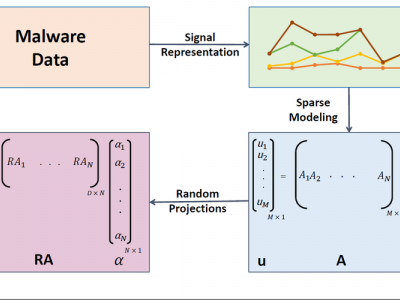Documents
Presentation Slides
SATTVA: SpArsiTy inspired classificaTion of malware VAriants

- Citation Author(s):
- Submitted by:
- Lakshmanan Nataraj
- Last updated:
- 23 February 2016 - 1:43pm
- Document Type:
- Presentation Slides
- Categories:
- Log in to post comments
There is an alarming increase in the amount of malware that is generated today. However, several studies have shown that most of these new malware are just variants of existing ones. Fast detection of these variants plays an effective role in thwarting new attacks. In this paper, we propose a novel approach to detect malware variants using a sparse representation framework. Exploiting the fact that most malware variants have small differences in their structure, we model a new/unknown malware sample as a sparse linear combination of other malware in the training set. The class with the least residual error is assigned to the unknown malware. Experiments on two standard malware datasets, Malheur dataset and Malimg dataset, show that our method outperforms current state of the art approaches and achieves a classification accuracy of 98.55% and 92.83% respectively. Further, by using a confidence measure to reject outliers, we obtain 100% accuracy on both datasets, at the expense of throwing away a small percentage of outliers. Finally, we evaluate our technique on two large scale malware datasets: Offensive Computing dataset (2,124 classes, 42,480 malware) and Anubis dataset (209 classes, 36,784 samples). On both datasets our method obtained an average classification accuracy of 77%, thus making it applicable to real world malware classification.

